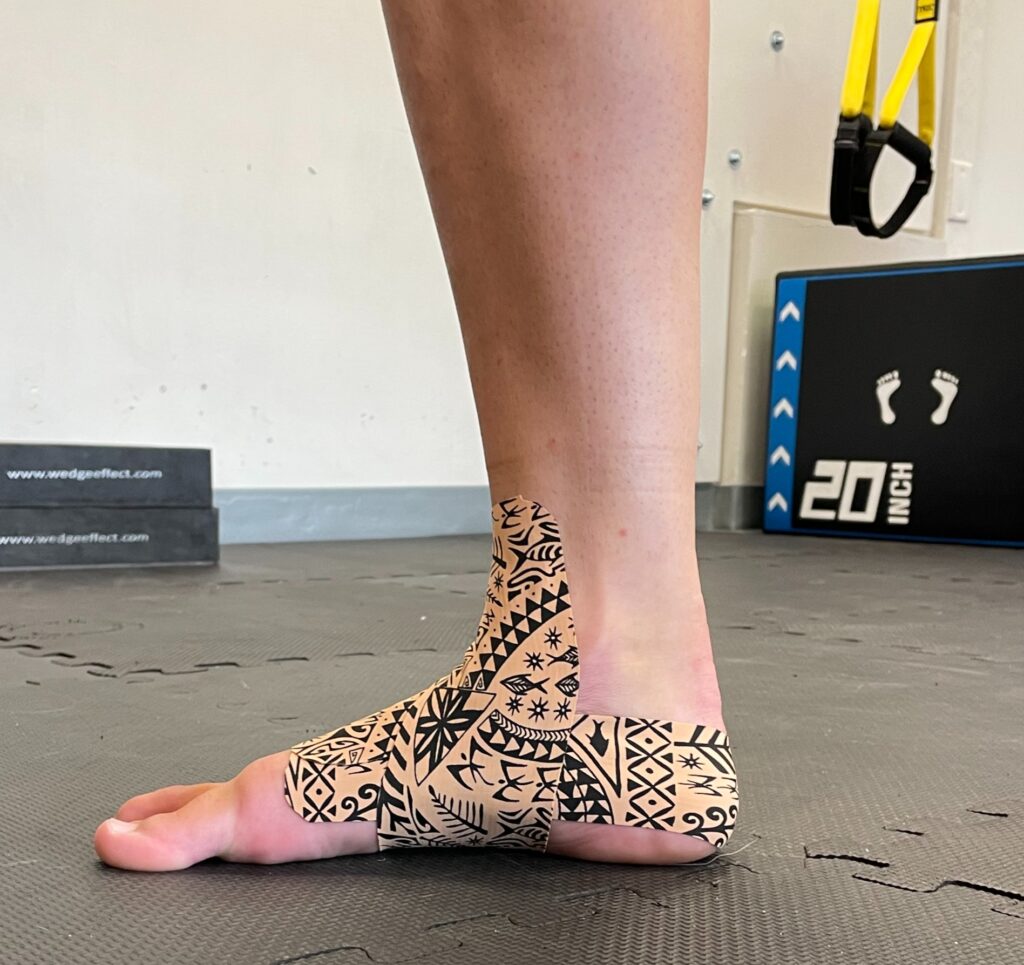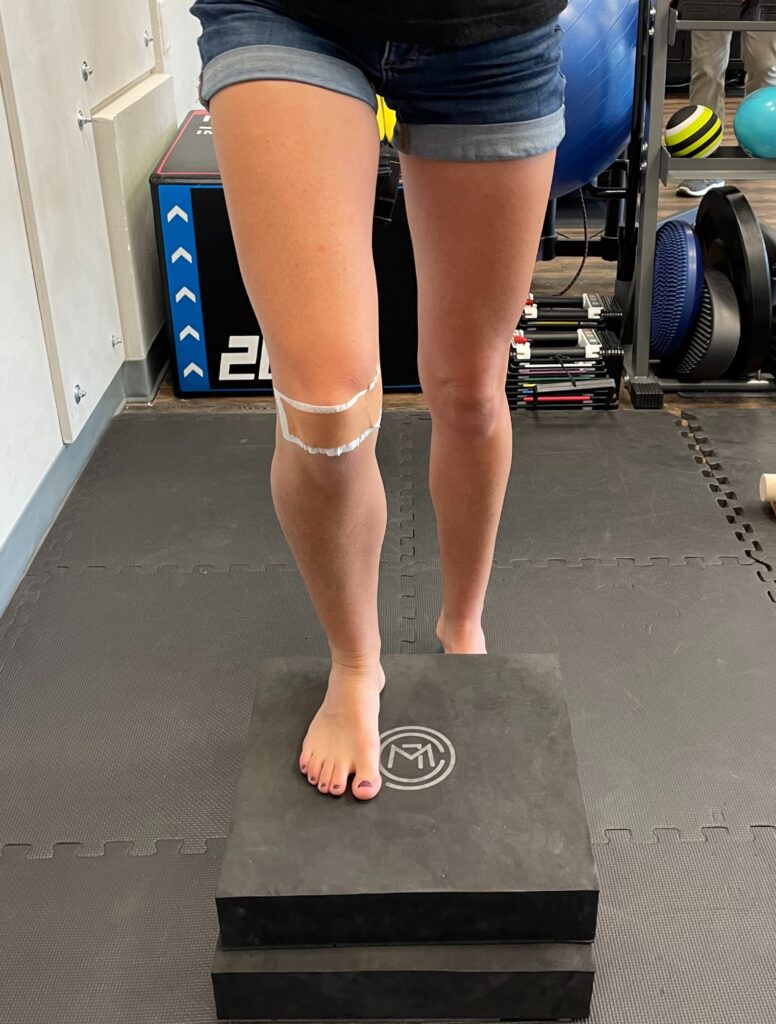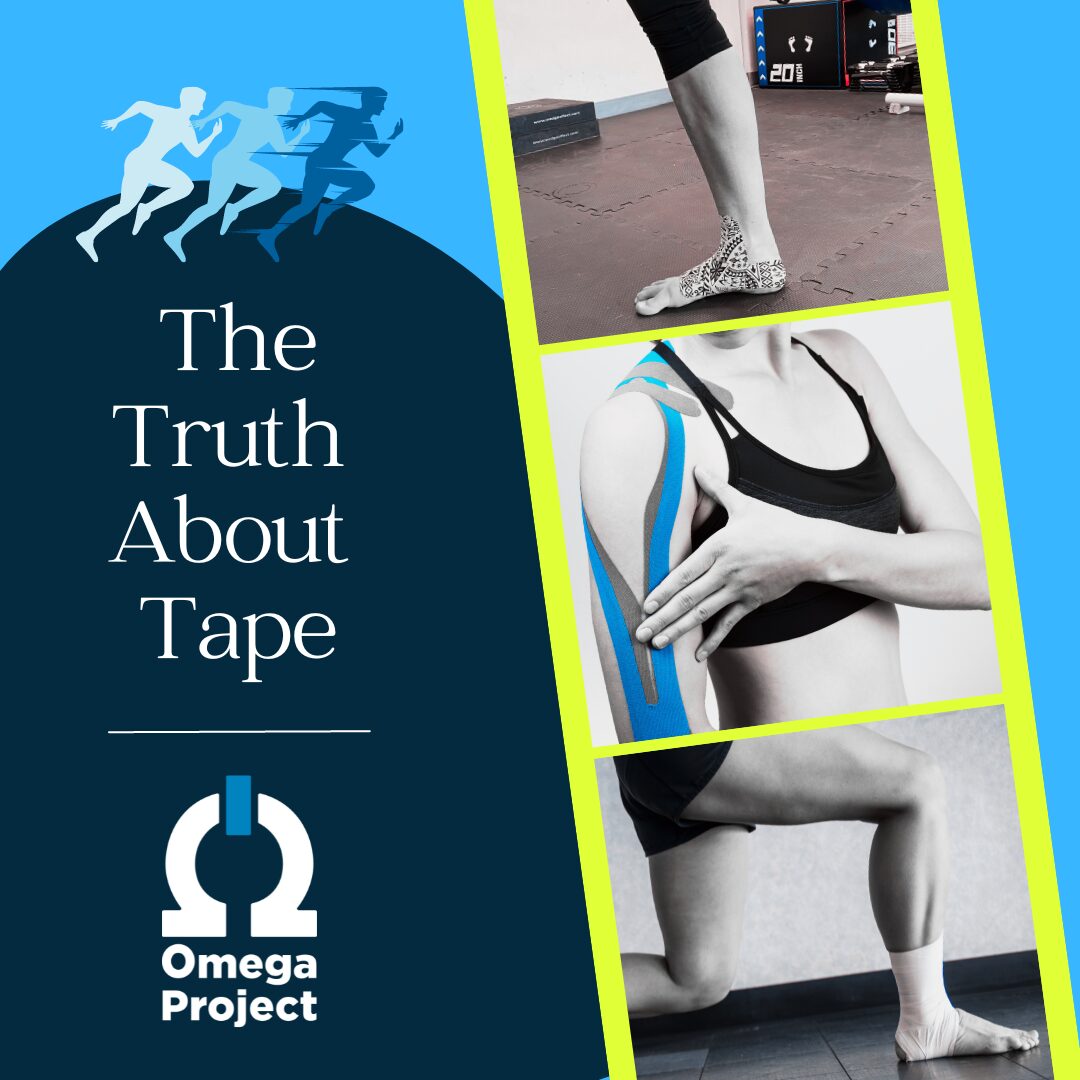Tape is a great tool that we have at our disposal as physical therapists. It is one of the many ways that we can help athletes have less pain and stay active while managing an injury (and it also happens to look pretty cool). There are many benefits to the use of tape, and depending on the type of tape used or the way that it is applied, it can serve quite few functions.
We get many questions about taping: when it should be used, how often it should be used, what type of tape to apply, how to apply it and many more. Here, we will discuss those questions and provide a bit more insight into our thoughts on taping.
What are the Benefits of Taping?
– Provides support to a joint or soft tissue structure
– Assists in unloading a joint or soft tissue structure
– Provides proprioceptive feedback to the brain (helps to tell the brain where a part of the body is in space)
– Reduces strain to a joint or tissue
– Improve joint stability
– Increase muscle activation
– Improve athlete confidence
– Reduces pain
What Type of Tape Should I Use?
The answer to this question really depends upon the intended goal with taping. There are many different brands of tape on the market these days and each one has its own proposed mechanism of how it works. A few of the most common types of tape that PT’s utilize are:
1. KT Tape
This type of tape provides feedback/proprioceptive input to the brain. It is widely used throughout the athletic world for injuries of many types, ranging from shoulder pain and instability to foot and ankle injuries. It is also utilized to promote lymphatic drainage and reduce swelling in an area.
2. Dynamic Tape:
This type of tape supports a structure through movement. Whether helping to unload the knee cap, assist the quadricep after a knee injury, support the tibialis posterior tendon and stabilize the arch of the foot, there are many ways that dynamic tape can be used. While there is definitely stretch to this tape, it provides a good amount of stability and strength and is well utilized when trying to reduce strain to an area while allowing an athlete to continue to train and compete.
3. Athletic Tape:
This type of taping restricts movement to provide support to a structure and prevent re-injury. Athletic tape is a much firmer tape that does not have the stretch/flexibility of KT tape or Dynamic Tape. It is truly aimed at promoting stability and helping immobilize a joint or body part. Athletic tape is best known for being used to stabilize an ankle after a sprain. The goal is to protect the ligamentous structures as they heal and to help prevent recurrent sprain.
When Is It Appropriate to Tape:
Taping is NOT a cure all and it really is not something that we intend for people to utilize long-term. We often use it as a temporary source of pain relief, postural cuing or support of a structure. If the taping technique helps an athlete to continue to participate in their chosen activity with less pain or more stability and we think that is something they will need for the foreseeable future, it can also be a good test as to whether someone would benefit from an orthotic or brace.
For example, if an athlete comes in with plantar fascia pain, we can often do an arch support taping technique that would mimic the benefits of an over the counter orthotic. If the athlete consistently gets relief from their symptoms with the taping, we would recommend that they get an orthotic while they also work on building their foot, ankle and hip strength. Below is an example of a dynamic taping technique we often utilize for this type of issue.

Another example is a person who is having knee pain due to patellofemoral pain syndrome. We can use a taping technique to provide a medial glide to the knee cap to help with pain reduction and allow these individuals to go up/down stairs more easily. If the taping is consistently helpful in allowing them to complete their daily and sport specific activity, a brace might also be beneficial as they work to improve their quad and hip strength and stability.

What Are the Down Sides to Taping?
There can be too much of a good thing. While taping can offer many benefits in injury management, the goal is ultimately for people to rehab and regain the strength, stability, proprioception and overall function in the injured region to be able to move without any external support.
With too much consistent support, our bodies become reliant on that support and no longer have the ability to use or stabilize a structure themselves. We often recommend that people use tape (or bracing) as a way to bridge the gap between injury and normal function.
The same advice goes for orthotics (most of the time)! The ultimate goal is to prepare our bodies to function just as well, or hopefully better, than they once did.
Of course, there are times where this is not possible; for example, as people are awaiting surgery or have a more significant injury and are trying to avoid surgical correction. These are situations that require a different plan, which should be discussed with a physician and physical therapist.
There are many ways that taping can be a helpful tool in injury management. If you would like to learn more or have a nagging injury that you would like to have assessed, you can reach us at cu*************@************pt.com OR schedule using the link below.

